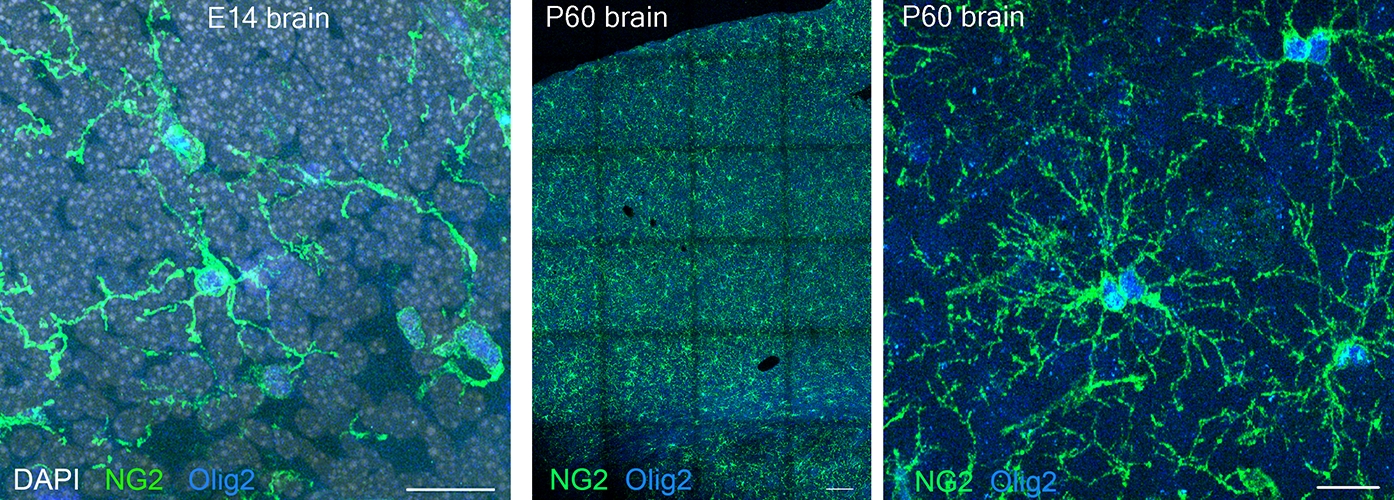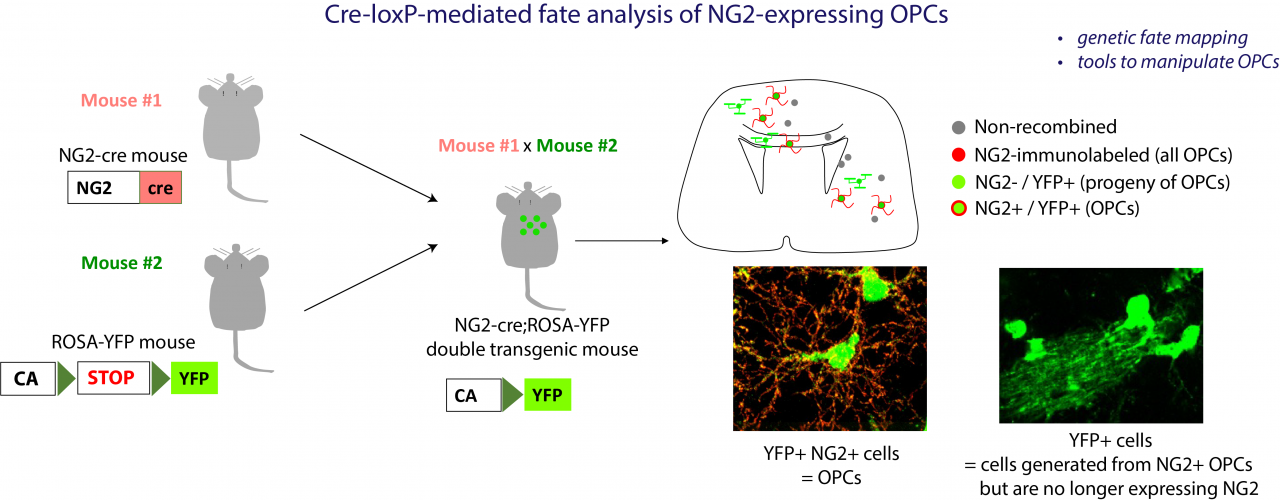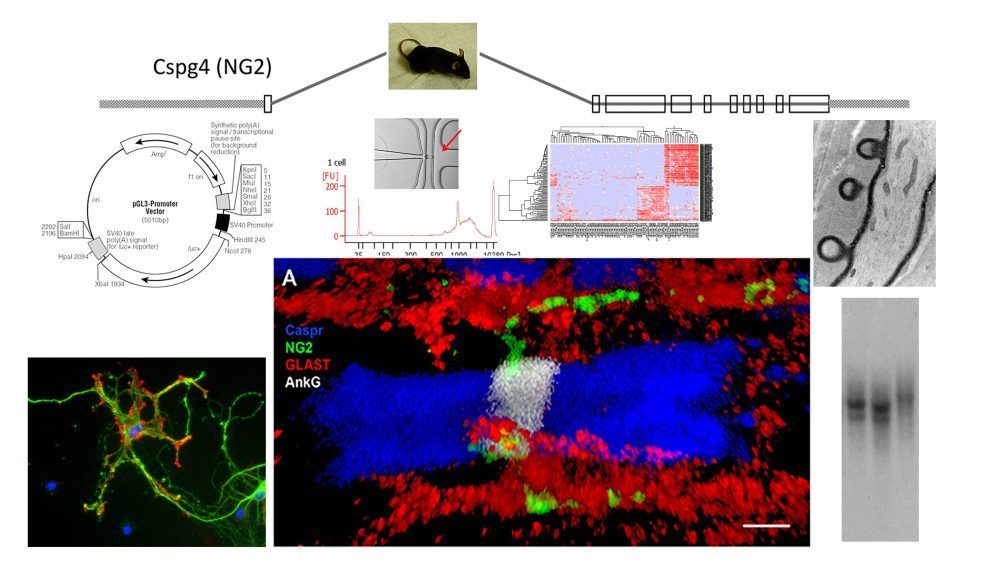We study the biology of oligodendrocyte precursor cells
Research in our lab
Overview
Oligodendrocyte precursor cells (OPCs, also known as polydendrocytes or NG2 cells) represent a resident glial cell population in the mammalian central nervous system (CNS). Their most well characterized function is to generate oligodendrocytes which produce myelin sheaths around axons and precisely regulate the timing of signal arrival. We are interested in understanding the basic biological principles that dictate the cellular behavior OPCs and how OPCs interact with the other cellular constituents of the CNS to modulate various physiological processes.
Current research focus
- Molecular and cellular mechanisms that regulate the density and lineage plasticity of OPCs under physiological and pathological conditions.
- How OPCs communicate with neurons and other cell types in the CNS.
- The role of OPCs in the neural circuit, particularly in understanding whether there are functions of OPCs that are independent of their role as oligodendrocyte precursor cells.
We are using a wide variety of approaches to answer these questions. Common approaches used in the lab include mouse genetics combined with immunohistochemistry, tissue culture (dissociated and organotypic), microscopy, biochemical, cell biological, and molecular genetic analyses. We are also expanding our analyses to include whole animal studies such as behavioral analyses of mutant mice. Other methods that we are incorporating into our studies include super resolution microscopy and whole genome profiling of transcripts and chromatin modifications.
Past contributions
We have continuously made progress toward understanding the biology of OPCs over the past 30 years.
1990s - We have applied immunodetection of two proteins, NG2 and platelet-derived growth factor receptor alpha (PDGFRα) to define a population of glial cells in the mammalian central nervous system (CNS). OPCs (NG2-expressing glial cells) exist not only in the developing CNS but also are distributed uniformly throughout the mature CNS where they exhibit a complex multi-processed morphology and remain proliferative throughout life. They are distinct from neurons, astrocytes, microglia, or mature oligodendrocytes.
2000s - There were questions about whether OPCs indeed give rise to oligodendrocytes that make myelin sheaths or whether that also serve as precursors to other cell types. To solve this question, we generated transgenic mouse lines to fate map OPCs at different developmental stages. OPCs in the postnatal brain are restricted to the oligodendrocyte lineage and those in the adult brain continue to produce myelinating oligodendrocytes. In addition, a subpopulation of OPCs in the prenatal CNS produce about one-third of the astrocytes in certain gray matter regions but not in the white matter.
2010s - The focus of our research shifted to studying the mechanisms that regulate OPC proliferation and their differentiation into myelinating oligodendrocytes. We have identified regional and age-dependent differences in the way in which OPCs interact with other cell types such as microglia. Furthermore, there is a critical temporal window after their final division during which their fate of self-renewal or terminal oligodendrocyte differentiation is influenced by their microenvironment such as neuronal activity and the state of myelination.
2020s -
Lab Contact
Phone:
860-486-1694
Location:
Pharmacy/Biology Building (PBB)
613, 617, 618


